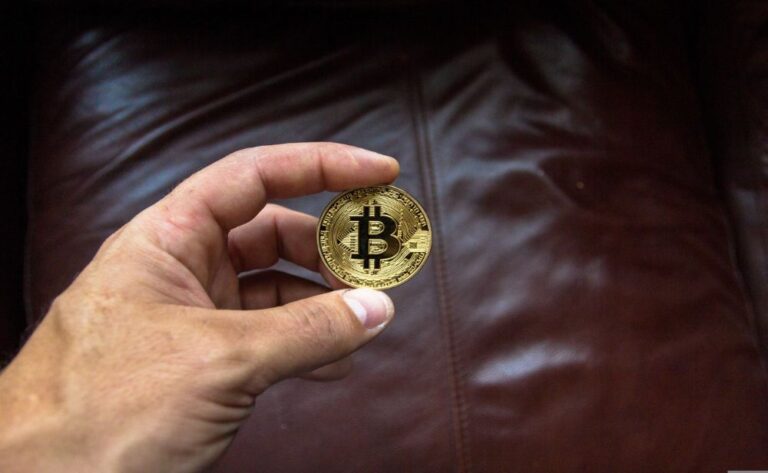12 most popular types of cryptocurrency

When people talk about cryptocurrencies, everyone talks about Bitcoin, but there are literally dozens of different options to choose from when it comes to digital currencies. Bitcoin gets all the headlines. In point of fact, cryptocurrencies that are not Bitcoin are typically regarded as “also-rans.” These cryptocurrencies are referred to as “altcoins,” which stands for alternatives to Bitcoin.
Even though Bitcoin was the first big cryptocurrency to appear on the market (released in 2009), several other cryptocurrencies have grown extremely popular, even if they are not quite as large as the original.
The entire dollar worth of all coins now in circulation is referred to as market capitalization, and the following list ranks cryptocurrencies according to their market cap. (The information on this page was last updated on August 25, 2022, and came from CoinMarketCap.com.)
TO THE TOP OF THIS PAGEOpen navigation for this page
When people talk about cryptocurrencies, everyone talks about Bitcoin, but there are literally dozens of different options to choose from when it comes to digital currencies. Bitcoin gets all the headlines. In fact, cryptos that aren’t Bitcoin are commonly considered “also ran” — what is termed “altcoins,” or alternatives to Bitcoin.
Even though Bitcoin was the first big cryptocurrency to appear on the market (released in 2009), several other cryptocurrencies have grown extremely popular, even if they are not quite as large as the original.
The entire dollar worth of all coins now in circulation is referred to as market capitalization, and the following list ranks cryptocurrencies according to their market cap. (The information on this page was last updated on August 25, 2022, and came from CoinMarketCap.com.)
The cryptocurrencies with the largest market caps
1. BTC (Bitcoin) (BTC)
• Price: $21,558
• Market cap: $413 billion
Bitcoin, the coin that heralded the beginning of the era of cryptocurrencies, is still the coin that most people think of when they talk about digital currency. Since its introduction in 2009 by its unknown creator, who is widely believed to be Satoshi Nakamoto, the value of the currency has been volatile throughout the years. On the other hand, it wasn’t until 2017 that cryptocurrency entered the mainstream consciousness.
2. Ethereum (ETH)
• Price: $1,697
• Market cap: $208 billion
The second name that you are most likely to recognize in the cryptocurrency field is Ethereum, which is the name of the platform that supports cryptocurrencies. The network enables you to utilize ether (the currency) to carry out a variety of operations, but the smart contract feature of Ethereum is a major contributor to the success of the cryptocurrency as a whole.
3. Bind securely (USDT)
• Price: $1.00
• Market cap: $67 billion
Tether’s pricing is anchored at $1 per coin. That’s because it is what’s termed a stablecoin. Stablecoins are tethered to the value of a certain asset, in Tether’s case, the U.S. Dollar. Tether typically functions as an intermediary when traders shift from one cryptocurrency to another. Rather than move back to dollars, they use Tether. However, some individuals are concerned that Tether isn’t safely guaranteed by dollars held in reserve but instead uses a short-term type of unsecured debt.
4. USD Coin (USDC)
• Price: $1.00
• Market cap: $52 billion
Like Tether, USD Coin is a stablecoin tied to the dollar, meaning that its value should not change. The currency’s founders say that it’s backed by completely reserved assets or those with “equivalent fair value” and those assets are stored in accounts with regulated U.S. institutions.
5. The Binance Coin (BNB)
• Price: $300.50
• Market cap: $49 billion
Binance Coin is the cryptocurrency released by Binance, among the top crypto exchanges in the world. While originally established as a token to pay for discounted trades, Binance Coin can now be used for payments as well as purchasing other goods and services.
6. Binance in US Dollars (BUSD)
• Price: $1.00
• Market cap: $19 billion
Binance USD is a dollar-backed stablecoin from prominent crypto exchange Binance in conjunction with Paxos. Binance USD was established in 2019 and is regulated by the New York Department of Financial Services. BUSD runs on top of the Ethereum blockchain.
7. XRP (XRP)
• Price: $0.3456
• Market cap: $17 billion
Formerly known as Ripple and launched in 2012, XRP offers a mechanism to pay in many different real-world currencies. Ripple can be useful in cross-border transactions and provides a trust-less approach to facilitate payments.
8. Cardano (ADA)
• Price: $0.4621
• Market cap: $16 billion
Cardano is the cryptocurrency platform behind ada, the name of the currency. Created by the co-founder of Ethereum, Cardano similarly employs smart contracts, enabling identity management.
9. Solana (SOL)
• Price: $35.63
• Market cap: $12 billion
Launched in March 2020, Solana is a younger cryptocurrency and it advertises its quickness at completing transactions and the overall robustness of its “web-scale” network. The issuance of the money, termed SOL, is capped at 480 million coins.
10. Dogecoin (DOGE)
• Price: $0.06829
• Market cap: $9 billion
Originally formed as a joke after the run-up in Bitcoin, Dogecoin draws its name from an internet meme portraying a Shiba Inu dog. Unlike many digital currencies limiting the quantity of coins in existence, Dogecoin enjoys infinite issuance. It can be used for payments or transmitting money.
11. Polkadot (DOT)
• Price: $7.50
• Market cap: $8 billion
Launched in May 2020, Polkadot is a digital currency that links the technology of blockchain from many different cryptocurrencies. A co-founder of Ethereum is one of Polkadot’s creators, and some industry watchers believe Polkadot is seeking to dethrone Ethereum.
12. Shiba Inu (SHIB)
• Price: $0.00001381
• Market cap: $7 billion
Shiba Inu was formed in August 2020 by a founder called Ryoshi and takes its name from the Japanese hunting dog. Its price surged in the fall of 2021 before plummeting considerably. Its small price has attraction for some inexperienced traders who can purchase more coins because to the modest price.
Bottom line
The cryptocurrency market is a Wild West (although it appears as if the U.S. government is ready to take a more active role in monitoring the crypto field), therefore individuals speculating in these digital assets should not put in more money than they can afford to lose. Volatility has been strong, with crypto assets moving drastically in 2022. The market has been dropping since reaching all-time highs in November 2021. And individual investors can be trading against very skilled individuals, making it a stressful experience for novices.





